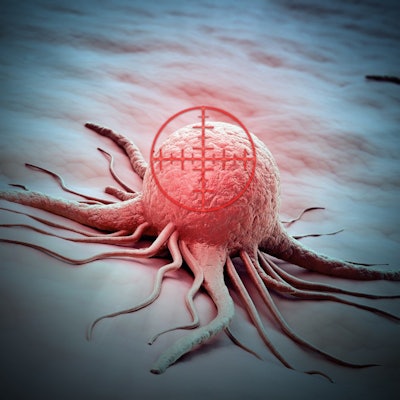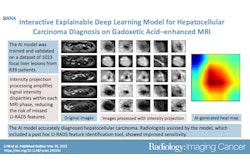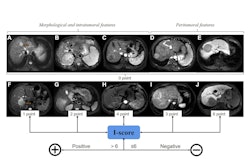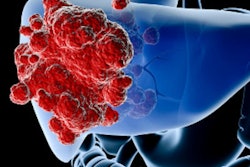
Combining CT with contrast-enhanced MRI (CE-MRI) can help extend survival for patients with hepatocellular carcinoma (HCC) by expediting more appropriate treatment decisions, according to a study published in the April issue of Radiology.
Researchers from South Korea compared patients with HCC who received three different imaging workups: CT alone, CT with unenhanced MRI, and CT with MRI and the linear gadolinium-based contrast agent (GBCA) gadoxetic acid. By acting upon the findings from CT and GBCA-enhanced MRI, the median survival rate for patients with HCC was almost double that of patients who received CT with unenhanced MRI.
"Our findings support the use of gadoxetic acid-enhanced MRI as part of a standard diagnostic workup in patients with localized HCC at CT," wrote the authors, led by Dr. Tae Wook Kang from Samsung Medical Center and Sungkyunkwan University (Radiology, April 2020, Vol. 295: 1, pp. 114–124). "This is in contrast to current management guidelines for HCC, which indicate that multiphasic contrast-enhanced CT and MRI are equivalent and that gadoxetic acid-enhanced MRI is unnecessary if the diagnosis is made at CT."
The prognosis for HCC patients depends on tumor stage, liver function, and their general health. Naturally, earlier cancer detection and more accurate staging can improve the chances for a healthier outcome. Currently, CT is the standard choice for detection and staging of HCC and distant lymph node metastases, while MRI is used to image the abdomen and pelvis. MRI, however, has a limited field of view for the upper abdomen for staging.
Here is where gadoxetic acid (Evoist/Primovist, Bayer HealthCare Pharmaceuticals) can be helpful. Approximately 50% of gadoxetic acid is absorbed by liver cells, which enhances hepatobiliary imaging to provide structural and functional information about the hepatobiliary system. The question is: Can this additional information from contrast-enhanced MRI combine with CT to better characterize HCC and help clinicians choose the best treatment for their patients?
"The higher diagnostic yield of gadoxetic acid-enhanced MRI in hepatocellular carcinoma is well established, but the impact of an initial diagnostic approach using CT plus gadoxetic acid-enhanced MRI on survival in patients with HCC is unknown," the authors wrote.
Kang and colleagues retrospectively analyzed a total of 30,023 patients (mean age, 58.5 ± 10.7 years) who were diagnosed with HCC between January 2008 and December 2010. Of those subjects, 16,849 people (56%) were diagnosed with CT alone, 3,867 cases (13%) were diagnosed with CT and noncontrast-enhanced MRI, and 9,307 patients (31%) underwent CT with gadoxetic acid-enhanced MRI.
During the median two-year follow-up through 2014, 20,398 patients (67%) died. Patients who underwent CT with gadoxetic acid-enhanced MRI achieved significantly longer median survival of 4.8 years, compared with 2.51 median years for patients having CT and unenhanced MRI and 1.06 median years for CT-only patients (p < 0.001).
There was a caveat with the results, however. The statistically significant difference in lower mortality risk with CT and gadoxetic acid-enhanced MRI only applied to patients with localized disease. When the researchers extended their analysis to patients with regional or distant metastases, they found no statistically significant difference between the three patient groups.
While they expressed their support for gadoxetic acid-enhanced MRI with CT for initial HCC staging, Kang and colleagues added that a "major consideration" in this approach is the "cost-effectiveness of the diagnostic procedure."




















